Progressive, controlled exercise after a soft tissue injury was probably one of the most important elements of Dexter’s rehabilitation program. Combined with stall rest, I began hand-walking Dexter on good footing that wasn’t too deep shortly after his diagnosis to stimulate tissue regeneration (soft tissue requires a bit of stress to heal properly).
While each horse’s regimen should be tailored to its individual situation, Dexter’s controlled exercise program went something like this:
- Weeks 0-2: Received diagnosis. Started hand-walking for 15 minutes, twice daily
- Weeks 2-4: Hand-walked for 20 minutes, twice daily
- Weeks 4-6: Hand-walked for 25 minutes, twice daily
- Weeks 6-8: Hand-walked for 30 minutes, twice daily
- Week 8: Rechecked to clear for walking under saddle
- Weeks 8-14: Walked under saddle for 30 minutes daily– walking a square without tight corners
- Weeks 14-16: Walked under saddle for 40 minutes daily. Introduced poles (graduating to cavalettis) and hills (on a large circle)
- Week 16: Rechecked to clear for trotting under saddle
- Weeks 16-17: Walked under saddle for 20 minutes as a warm up, trotted for 1 minute (no small circles, no hard turns), and walked again for another 10 minutes as a cool down. Followed with 20 minutes of Horseware Ice Vibe boots.
- Weeks 17-18: Walked under saddle for 20 minutes as a warm up, trotted for 5 minutes with walk breaks (no small circles, no hard turns), and walked again for another 5 minutes as a cool down. Followed with 20 minutes of Horseware Ice Vibe boots.
- Weeks 18-20: Walked under saddle for 20 minutes as a warm up, trotted for 10 minutes with walk breaks (no small circles, no hard turns), and walked again for another 5 minutes as a cool down. Followed with 20 minutes of Horseware Ice Vibe boots.
- Weeks 20-22: Walked under saddle for 20 minutes as a warm up, trotted for 15 minutes with walk breaks (no small circles, no hard turns), and walked again for another 5 minutes as a cool down. Followed with 20 minutes of Horseware Ice Vibe boots.
- Weeks 22-24: Walked under saddle for 20 minutes as a warm up, trotted for 20 minutes with walk breaks (no small circles, no hard turns), and walked again for another 5 minutes as a cool down. Followed with 20 minutes of Horseware Ice Vibe boots.
- Week 24: Rechecked to clear for cantering under saddle
- Weeks 24-25: Walked under saddle for 20 minutes as a warm up, trotted for 15 minutes with walk breaks (no small circles, no hard turns), cantered for 1 minute on a large circle, and walked again for another 5 minutes as a cool down. Followed with 20 minutes of Horseware Ice Vibe boots.
- Weeks 25-26: Walked under saddle for 20 minutes as a warm up, trotted for 15 minutes with walk breaks (no small circles, no hard turns), cantered for 5 minutes on a large circle with walk breaks, and walked again for another 5 minutes as a cool down. Followed with 20 minutes of Horseware Ice Vibe boots. Also re-introduced turnout in small paddock.
- Weeks 26-28: Walked under saddle for 20 minutes as a warm up, trotted for 15 minutes with walk breaks (no small circles, no hard turns), cantered for 10 minutes on a large circle with walk breaks, and walked again for another 5 minutes as a cool down. Followed with 20 minutes of Horseware Ice Vibe boots.
- Weeks 28-30: Walked under saddle for 20 minutes as a warm up, trotted for 15 minutes with walk breaks (no small circles, no hard turns), cantered for 15 minutes on a large circle with walk breaks asking for more bend and straightness, and walked again for another 5 minutes as a cool down. Followed with 20 minutes of Horseware Ice Vibe boots. Reintroduced Dexter to normal turnout in a large field.
- Weeks 30-32: Walked under saddle for 20 minutes as a warm up, trotted for 15 minutes with walk breaks (no small circles, no hard turns), cantered for 20 minutes on a large circle with walk breaks, and walked again for another 5 minutes as a cool down. Followed with 20 minutes of Horseware Ice Vibe boots.
- Week 32: Rechecked to clear for full training
Another thing I discussed with my vet was calming agents to help with my controlled exercise program. Dexter started off walking under saddle without getting hot or fresh, but once we introduced trotting I needed a little help to take the edge off. The whole purpose of rehabbing Dexter was to bring him back to work while limiting the amount of stress to the injury and building strength at the same time. Sometimes a little assistance was needed to do this safely and effectively.
It took a lot of baby steps and patience to create and execute an exercise regimen that contributed to Dexter’s recovery. The total length of our program was 2 years. After Dexter’s initial collateral ligament injury diagnosis, we hit a wall at week 26. Dexter’s lameness came back which told us he wasn’t ready to move forward. So, I listened and gave him more time off to rest. A followup MRI revealed a secondary injury to his deep digital flexor tendon, which explained the lapse in progression. We once again proceeded with our exercise protocol, only to have long-lasting positive results this time.
Before moving on to each new gait under saddle, my veterinarian and I reassessed Dexter’s lameness and progression of injury every two months while I examined Dexter’s legs and feet for swelling or heat daily. My farrier was also very involved in this process, discussing therapeutic shoeing options with my vet to protect and support Dexter’s damaged tissue during increased activity.
Are you currently rehabbing a horse from injury? I would love to see your controlled exercise plan and how you are approaching your horse’s return to work!

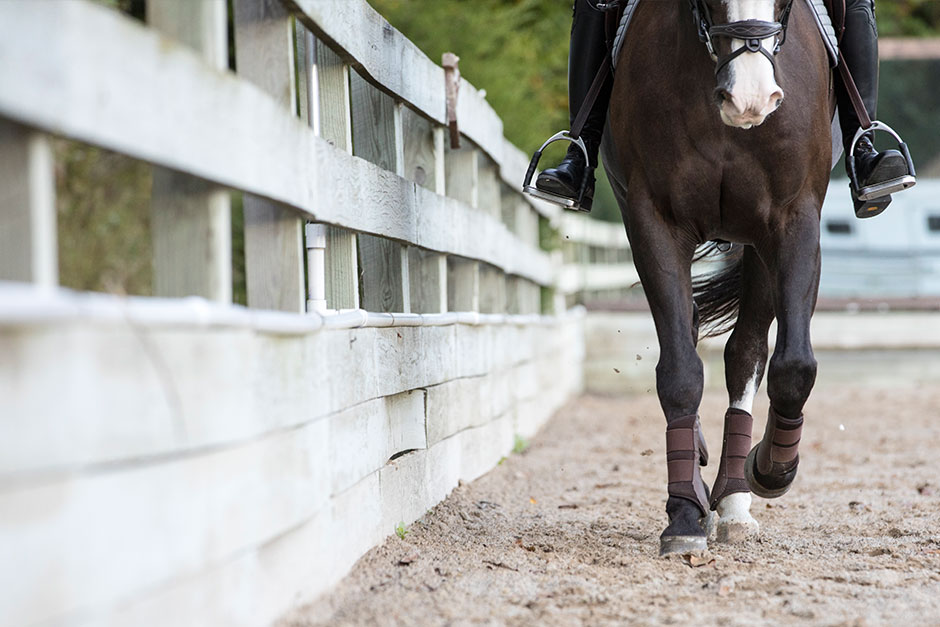
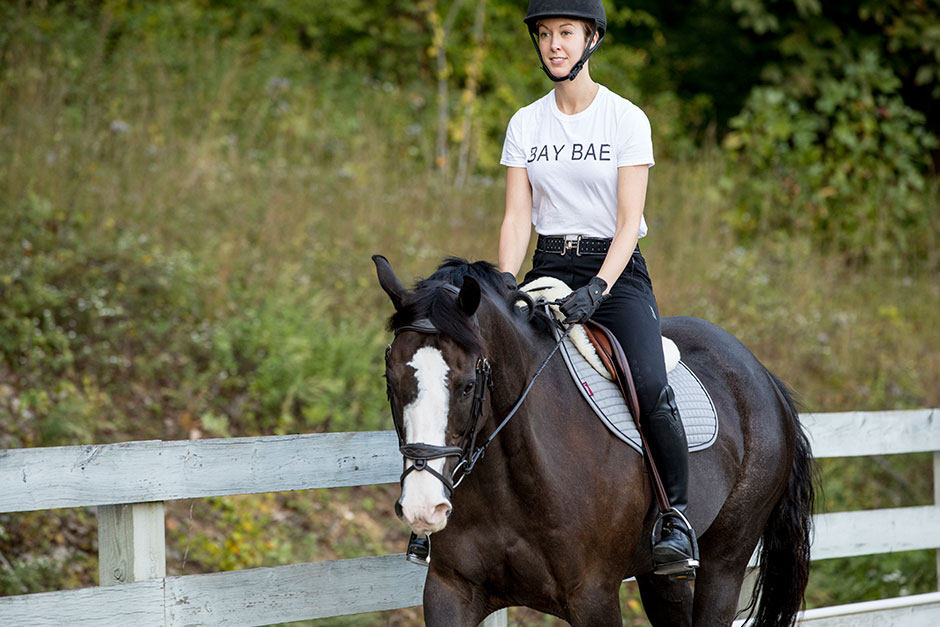
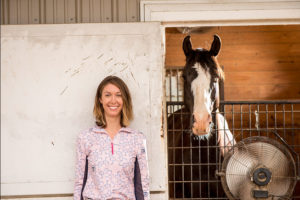
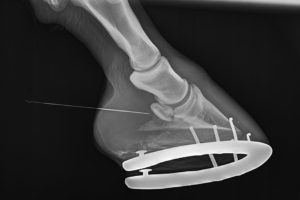
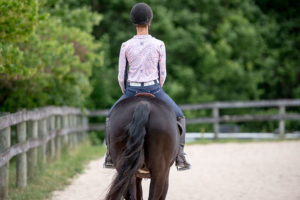
How Therapeutic Shoeing Helped Dexter Rehab From A Deep Digital Flexor Tendon Injury | Paperchases & Petticoats
January 20, 2019 at 5:54 pm[…] feet had not been trimmed and balanced appropriately and B) the ground conditions and controlled exercise status were not considered. My farrier came out every 4-5 weeks in order to make changes […]